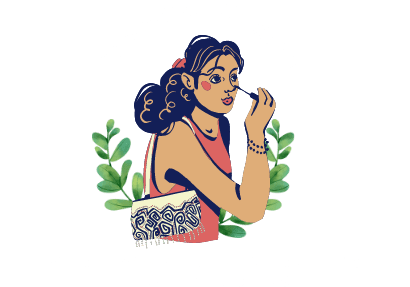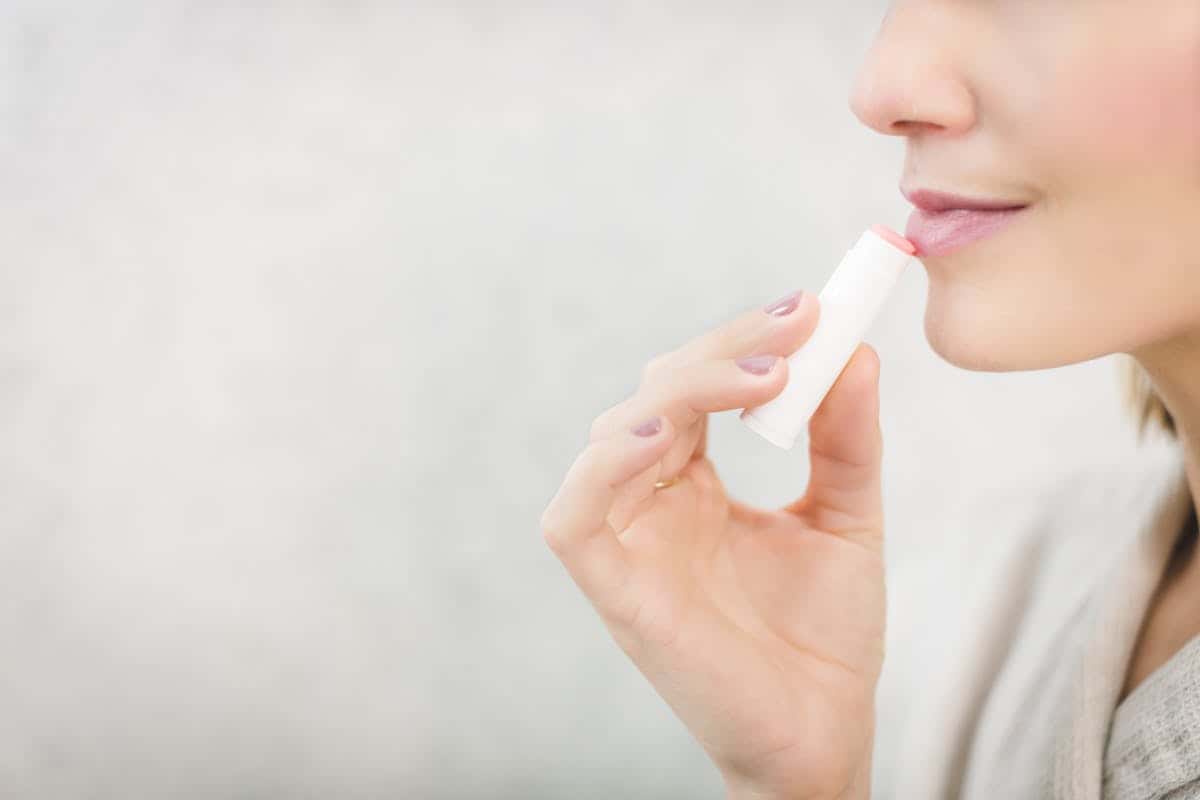Here is your complete guide to lip balm vs chapstick.
Introduction to Lip Balm vs Chapstick
When it comes to lip care, many people wonder about the difference between lip balm vs chapstick. While the terms are often used interchangeably, they are not exactly the same. Lip balm is a broad category of moisturizing and protective lip products, whereas Chapstick is actually a brand name that has become synonymous with stick-style lip balm. This article will explore the distinctions, ingredients, benefits, and more to help you understand these essential lip care products and choose the right one for your needs.
Lip balm vs chapstick often sparks confusion because Chapstick is commonly mistaken as a generic term. Yet, understanding the subtle differences can help you select better lip care options. Both products are designed to hydrate, protect, and soothe the delicate skin on your lips, but their formulations, textures, and packaging sometimes vary.
Key points we’ll cover include ingredient comparisons, packaging differences, common myths, and how to pick the right product based on your lifestyle and needs. Tables will help clarify the details visually, and FAQs will address common questions many have. By the end, you’ll be equipped with expert knowledge to make an informed choice for your lip health.
What Are Lip Balm and Chapstick?
Definitions and General Purpose
- Lip balm is a generic term describing a wide range of products designed to moisturize and protect the lips from dryness, chapping, and environmental damage.
- Chapstick is a brand name (owned by Pfizer) that refers specifically to a style of lip balm usually in a small stick-shaped tube for easy application.
- Both are formulated to form a protective barrier that locks in moisture and shields lips from cold, wind, or sun damage.
Forms and Packaging Differences: Lip Balm vs Chapstick
| Feature | Lip Balm | Chapstick |
|---|---|---|
| Definition | General lip moisturizing products | Brand name; often synonymous with stick lip balm |
| Packaging | Tubes, jars, pots, sticks | Typically stick tube |
| Form | Solid, gel, liquid | Mostly solid stick |
| Primary Use | Moisturizing and protection | Moisturizing and protection |
Lip balm comes in various formats like jars or tubes, sometimes requiring finger application, while Chapstick is almost always a twist-up stick applied directly. This makes Chapstick convenient for on-the-go use.
History and Branding of Chapstick vs Lip Balm
Chapstick originated in the 1880s and quickly became popular for its ease of use and effectiveness. Over time, the Chapstick brand became so dominant in the market that the term is now widely used generically for any stick lip balm, much like Kleenex with tissues.
On the other hand, lip balm as a category evolved with different brands offering various types, including medicated, tinted, natural, and flavored balms beyond the traditional Chapstick.
Key Brands
- Chapstick® — The iconic stick balm brand.
- Burt’s Bees — Known for natural ingredient lip balms.
- Blistex — Offers medicated and SPF lip balms.
The brand history reflects how lip balm vs chapstick is often blurred by language but encompasses a broader product range.
Key Ingredients Comparison: Lip Balm vs Chapstick
The ingredients in lip balm vs chapstick can vary but generally serve to moisturize, protect, and sometimes provide medicinal benefits.
| Ingredient | Function | Examples in Lip Balm/Chapstick |
|---|---|---|
| Waxes | Provide structure, form barrier | Beeswax, carnauba wax |
| Oils | Moisturize and soften | Coconut oil, mineral oil |
| Emollients | Create smooth texture | Lanolin, dimethicone |
| Sunscreen agents | Protect from UV rays | Octinoxate, oxybenzone |
| Additives | Flavor, fragrance, medicated | Menthol, camphor, vitamin E |
Lip Balm Ingredients
- Often contain natural ingredients like shea butter, aloe vera, and vitamin E, which deeply hydrate and soothe lips.
- Balms may have richer and creamier textures suitable for healing very dry or chapped lips.
- Some formulations are vegan, cruelty-free, and use organic ingredients.
Chapstick Ingredients
- Typically sticks with beeswax and petrolatum as primary agents.
- Lighter texture and often include SPF for sun protection.
- Chapstick formulations can contain synthetic emollients and flavor additives designed for everyday use.
Different ingredients cater to various needs—whether long-lasting hydration, sun protection, or medicated relief.
Usage and Benefits: Lip Balm vs Chapstick
Typical Uses
- Lip balm is excellent for deep hydration, healing cracks, and providing a protective moisturizing layer, especially in harsh climates or cold seasons.
- Chapstick is ideal for frequent, easy application to maintain moisture and protect against environmental damage such as windburn or sun exposure.
Benefits
- Both help prevent dryness and soothe already damaged lips.
- Some lip balms provide SPF protection, healing properties from vitamins and antioxidants.
- Cosmetic benefits: Tinting or gloss from balms enhance lip appearance, while Chapstick focuses more on basic care.
When to Choose Which?
- For daily preventative care, Chapstick in stick form is handy and quick.
- For intensive treatment of chapped lips or at night care, richer lip balms may be preferred.
- Flavor and scent preferences might also guide choice.
Remember to reapply regularly especially after eating or drinking to maintain efficacy.
Packaging and Application Methods Compared
| Packaging Type | Convenience | Hygiene | Portability | Common Product Type |
|---|---|---|---|---|
| Stick tube | High | High | High | Most Chapsticks, lip balms |
| Jar/Pot | Medium | Lower | Medium | Some lip balms |
| Squeeze tube | Medium | Medium | Medium | Gel-like lip balms |
| Spherical balm | Novelty/Medium | Medium | Medium | Specialty lip balms |
- Stick tubes (Chapstick style) offer excellent portability and hygienic direct application without fingers.
- Jars require dipping fingers, less hygienic but allow thicker or softer balm textures.
- Squeeze tubes are common for gel balms, convenient but sometimes messier.
- Novel formats like spherical balms are emerging for novelty and even application.
Brands of Lip Balm vs Chapstick
| Brand | Description |
|---|---|
| ChapStick | The iconic stick lip balm brand known for moisturizing and protecting lips. |
| Dr. Bronner’s | Organic lip balms with natural, fragrance-free formulas praised for hydration. |
| Burt’s Bees | Popular for natural ingredient lip balms with a variety of scents and formulations. |
| Blistex | Known for medicated and SPF protective lip balms. |
| Lanolips | Specializes in lanolin-based deeply moisturizing lip balms. |
| eos | All-natural, hydrating lip balms in various styles and flavors. |
| Fresh | Luxurious lip treatments including the popular Sugar Lip Balm line. |
| La Mer | High-end lip balms and serums known for intensive lip nourishment. |
| Lip Smacker | Fun, flavored lip balms often inspired by pop culture and branded collaborations. |
| Breeze Balm | Premium, high-performance lip and skin balms with deep moisturizing properties. |
Common Myths and Misconceptions About Lip Balm vs Chapstick
- Chapstick is just a brand, not a product different from lip balm.
- Lip balm addiction myth: Some believe frequent use decreases natural lip moisture. Studies indicate this is a myth; lip balms don’t halt moisture production but rather provide relief from dryness.
- SPF in lip balm and Chapstick varies: Not all contain sunscreen, so check labels for protection claims.
- All lip balms are not the same: Formulations vary widely between brands and types.
How to Choose the Right Product for Your Lips
Consider:
- Skin sensitivity: Look for gentle, fragrance-free, or natural ingredient balms.
- Climate: Drier or colder environments need richer moisturizers.
- Usage: Daily wear vs intensive healing products.
- Medicated vs cosmetic: Medicated versions help with severe cracking or pain.
- Ingredient awareness: Avoid allergens or irritants based on personal reaction.
Environmental and Ethical Considerations
- Choose lip balms with biodegradable packaging or recyclable tubes.
- Look for cruelty-free and vegan formulations if ethical sourcing matters.
- Natural plant-based oils and waxes are environmentally friendlier alternatives to petroleum-based products.
Read Also: Honey Hair Mask.
Frequently Asked Questions (FAQs) About Lip Balm vs Chapstick
What is the difference between Chapstick and lip balm?
Chapstick is a brand mostly known for stick lip balms, while lip balm refers to any moisturizing lip product.
Read Also: Coconut Oil Hair Food.
Can I use lip balm instead of Chapstick?
Yes. They serve the same purpose, but textures and packaging may differ.
Read Also: Best Coconut Oil for Oil Pulling.
Do all lip balms have SPF?
No. Only some lip balms and Chapsticks include SPF; check product labels.
Read Also: Coconut Hair Oil.
Are lip balms addictive?
No scientific evidence supports addiction; they’re safe for regular use.
Read Also: Skincare Routine Step Face Tanner.
Can lip balm/Chapstick prevent chapped lips?
Yes. They create a protective barrier and hydrate lips to prevent chapping.
Read Also: Tallow Lotion Recipe.
Conclusion
Understanding the difference between lip balm vs chapstick is key to making informed choices for your lip care routine. While Chapstick is a well-known brand and often used interchangeably with lip balm, it technically refers to a specific style of stick lip balm. In contrast, lip balm is a broader category that includes a variety of formulations, ingredients, and packaging types designed to moisturize, protect, and sometimes heal your lips.
Read Also: Best Natural Lotion.
Both products serve essential functions in preventing dryness, soothing chapped lips, and shielding against environmental factors like sun, wind, and cold. Choosing between lip balm and Chapstick depends on your personal preferences, lifestyle, skin sensitivity, and the specific benefits you seek—be it intensive healing, sun protection, or sheer convenience.
Read Also: Gradual Tanning Lotion.
References and Resources Used in This Article:
- “Characterization of lip balm coatings and XDLVO modeling – PMC”.
- “What Is Lip Balm and Is It Better Than Chapstick? – Augustinus Bader”.
- “Are Lip Balms and Chapsticks Bad for You? And Could They Be Addictive?”.
- “Lip Balm vs. ChapStick: What’s the Difference? – RMS Beauty”.
- “Is Lip Balm Making My Chapped Lips Worse? – The New York Times”.

